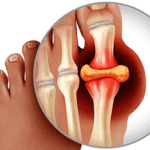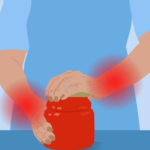Introduction
Elbow fractures are common injuries resulting from trauma, falls, or sports activities. These fractures can significantly impact mobility and function, necessitating proper diagnosis and treatment. This article provides a comprehensive overview of elbow fractures, their symptoms, causes, and treatment options, following SEO best practices for enhanced visibility and engagement.
Types of Elbow Fractures
Elbow fractures can involve different parts of the elbow, including:
- Distal Humerus Fractures: Involving the lower end of the upper arm bone.
- Radial Head and Neck Fractures: Affecting the radius bone near the elbow.
- Olecranon Fractures: Involving the bony tip of the elbow (part of the ulna).
Symptoms
Common symptoms of elbow fractures include:
- Sudden, intense pain at the time of injury.
- Swelling and bruising around the elbow.
- Visible deformity or displacement in severe cases.
- Difficulty moving the elbow or arm.
- Numbness or weakness in the hand or fingers, indicating possible nerve involvement.
Causes
Elbow fractures often result from:
- Falls: Landing on an outstretched hand.
- Direct trauma: Impact from accidents or sports injuries.
- Overuse: Repetitive stress leading to stress fractures.
Diagnosis
Diagnosing an elbow fracture involves:
- Physical Examination: Assessing pain, swelling, and deformity.
- Imaging Tests: X-rays, CT scans, and MRIs to determine the extent and specific location of the fracture.
Treatment Options
The treatment of elbow fractures depends on the type and severity of the fracture:
- Non-surgical Treatments:
- Immobilization: Using casts, splints, or slings to keep the elbow stable.
- Pain Management: Over-the-counter pain relievers and anti-inflammatory medications.
- Physical Therapy: To restore movement and strength once the initial healing phase is over.
- Surgical Treatments:
- Open Reduction and Internal Fixation (ORIF): Realigning the bones and securing them with screws, plates, or pins.
- Total Elbow Replacement: In severe cases where the joint is irreparably damaged.
- Bone Grafting: For fractures that do not heal properly (non-union fractures).
Recovery and Rehabilitation
Recovery from an elbow fracture can take several weeks to months. Physical therapy plays a crucial role in rehabilitation by:
- Improving range of motion.
- Strengthening muscles around the elbow.
- Reducing stiffness and pain.
- Preventing complications such as muscle atrophy and joint instability.
Prevention
Preventing elbow fractures involves:
- Using protective gear during sports.
- Maintaining bone health through proper nutrition and exercise.
- Learning and using proper techniques in physical activities to reduce the risk of falls and trauma.
FAQs
Q: How long does it take for an elbow fracture to heal? A: Healing time varies but typically ranges from six weeks to several months, depending on the severity of the fracture and the treatment method.
Q: Can elbow fractures heal without surgery? A: Yes, non-displaced fractures often heal with immobilization and conservative treatments. However, displaced fractures usually require surgical intervention.
Q: What are the signs that I might have a fractured elbow? A: Signs include intense pain, swelling, bruising, deformity, and difficulty moving the arm. Numbness or weakness in the hand or fingers can also occur.
Q: How can physical therapy help in recovering from an elbow fracture? A: Physical therapy helps by restoring movement, reducing pain and stiffness, strengthening surrounding muscles, and preventing future injuries.
Conclusion
Understanding and properly treating elbow fractures is crucial for a successful recovery and return to normal activities. Early diagnosis, appropriate treatment, and diligent rehabilitation can significantly improve outcomes for individuals with elbow fractures





